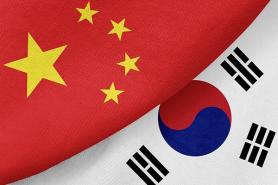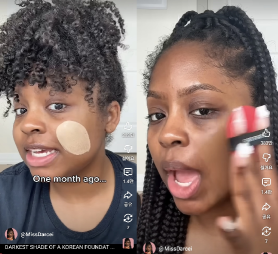
SEOUL, November 24 (AJP) - Chinese e-commerce platforms and beauty brands are rapidly expanding their presence in South Korea, intensifying competition in markets long dominated by domestic players.
Platforms such as TEMU and AliExpress are leaning heavily on social media influencers to reach South Korean consumers, while Chinese cosmetics companies are capitalizing on TikTok-driven trends to grow both at home and abroad.
TEMU recently hired an influencer marketing manager in South Korea to build a local promotional team, while AliExpress and SHEIN are ramping up affiliate marketing programs. The surge in activity has helped popularize phrases like “TEMU haul” among South Korean users.
“Chinese platforms are moving beyond low-price competition to integrate sophisticated marketing strategies,” an industry source said on condition of anonymity.
The strength of these e-commerce platforms is feeding momentum for Chinese beauty brands. Flower Knows drew more than 2,000 visitors on the opening day of its Seoul pop-up store last month, and Judydoll is preparing to launch on Coupang.
YoYoSo — often described as “China’s Daiso” — opened its first South Korean store in Gunsan and plans to unveil a large beauty-focused outlet in Seoul next year.
Much of the surge is tied to the “Douyin makeup” craze among Gen Z, characterized by bold colors and highly visible transformations. Chinese beauty brands have benefited from this shift, bolstered by low production costs that give them a significant price advantage.
The competition is increasingly global. Data from the Korea International Trade Association shows China’s cosmetics exports rose 9.1 percent to roughly $5.4 billion between January and September, while South Korea’s exports to China fell 18.7 percent, slipping behind the United States in export rankings.
In color cosmetics, South Korea’s lip product exports totaled $466.68 million — well below China’s $645.93 million — while its eye makeup exports were only one-third of China’s. Google search trends in September also showed C-beauty overtaking K-beauty.
At home, the market is becoming more complicated. With anti-Japanese sentiment easing, Japanese beauty brands are returning to South Korea. Canmake has re-entered the market through retail chain Olive Young after a 2019 exit, while Chinese lifestyle brands are pushing low-cost beauty lines, intensifying pressure on domestic brands from both China and Japan.
Experts say K-beauty needs to strengthen its color cosmetics capabilities, moving beyond the skincare-heavy structure that has defined its global success. With ODM technologies narrowing quality gaps, price, storytelling, and community-building are becoming decisive factors.
“Being ‘Made in Korea’ is no longer enough,” said another industry source. “Brands need stronger narratives, experiential content, and loyal communities to sustain growth as C-beauty surges.”
* This article, published by Economic Daily, was translated by AI and edited by AJP.
Copyright ⓒ Aju Press All rights reserved.



